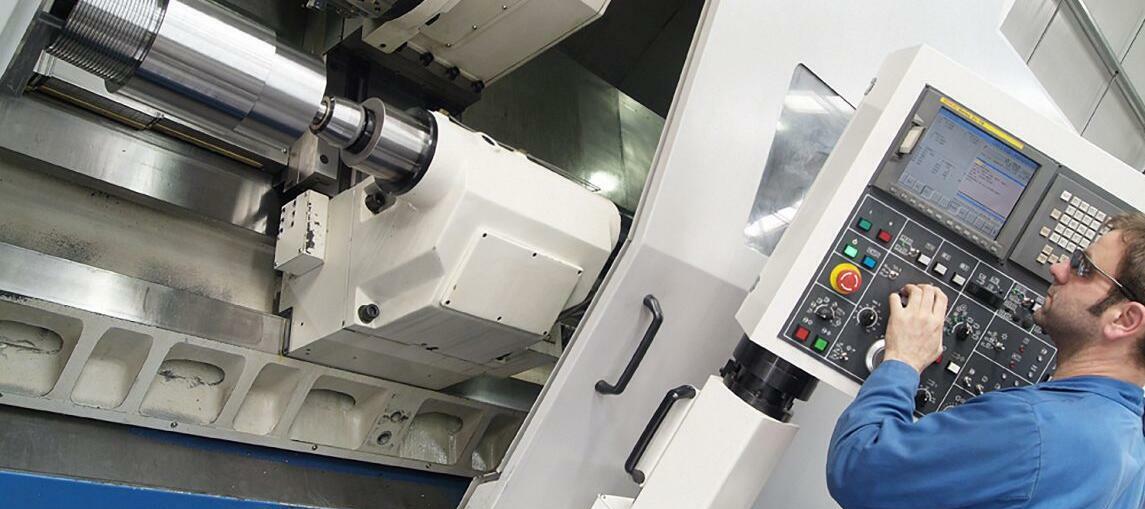Studies have shown that production downtime can cost CNC manufacturers over £180bn every year.
There are a multitude of reasons that can cause or lead to this production downtime, but they all have the same end result – lost time, lost money, and endless frustration. For some manufacturers, production downtime is part of their manufacturing routine, something they accept and learn to live with or work around.
If you are one of them, read on to learn how to tackle the most common reasons for downtime and take back control of your production schedule.
Problem – Reactive/Emergency Maintenance
Maintenance is one of the most common causes of machine downtime, especially when emergency maintenance is needed. When a machine unexpectedly breaks or suddenly starts producing bad parts, production has to stop immediately until maintenance can get on-site to fix it (which can sometimes take days).
Further to this, once on-site, maintenance have to then discover what is actually wrong with the machine, which could take another few days, not including the time it takes to fix the problem or if they need to order spare parts. One problem could, therefore, set production back weeks.
Solution – Performance Tracking and Predictive Maintenance
Tracking machine performance, using software like MSP's NC-Checker, is essential to stop losing time to emergency maintenance. By tracking your machine(s) performance over time, you can predict when the machine will need maintenance and schedule it in at a convenient time for production, before the machine fails, thereby minimising production downtime as much as possible.
Furthermore, NC-Checker not only tracks performance, it can also indicate what the issue is when things do go wrong (for example, rotaries, linear bearings or parameters in the controller that need changing). This allows the manufacturer to show this information to their maintenance team and shorten the investigation process, and subsequent machine downtime, considerably.
This also helps when there has been a crash on the machine. NC-Checker can be used to identify exactly what, if any, issues the crash has caused and, again, shorten the investigation process and get the machine back working as quick as possible.
Problem – Routine Maintenance
Similarly, a large amount of production downtime is caused by time spent checking whether the machine is even just ‘okay’. To do this, maintenance need to take the machine out of production and check it using mechanical means. If the machine is found to actually be capable, this downtime has not only been disruptive but has wasted time which could have been spent machining parts.
Solution – Machine Benchmarking
There are many tools on the market now which can perform a quick daily assessment of your CNC machine tool and let you know straight away whether the machine is capable of machining parts to tolerance or not. This not only saves time but gives you the confidence your parts will be machined accurately.
Problem – Operator Availability Issues
Let’s be honest, operators just aren’t going to be available 24 hours, 7 days a week. Meetings, training, annual leave, illness and other projects, can leave you without operators to run your machining programs or set up your parts, leading to unnecessary and wasteful production downtime.
Solution – 24/7 Lights Out Automation
Automating manual processes like the part setup, machine setup, probe calibration or the running of certain programs is the best way to prepare for operator absences. It allows operators to set these processes running and leave them until they’re finished – meaning they can attend meetings, appointments or work on other projects without compromising productivity on the shop floor.
This also has a very important secondary benefit as it also simplifies complex processes so operators of any skill level can perform them. This means you don’t have to risk potential production downtime by waiting for a highly-skilled operator to be available to undertake certain processes.
Problem – Manual Part Setup or Probe Calibration
Not only do manual processes require highly-skilled operators, but they take a long time to perform to achieve the necessary accuracy. And as long as these processes are being undertaken, the machine is not being used for anything productive. For example, achieving an accurate part alignment can take hours, multiple attempts, and potentially, multiple shifts.
Solution – Automation
Automating part alignment using software like NC-PartLocator, can reduce setup from days to minutes and keep machine downtime to a minimum.
This level of automation can have important secondary benefits too. In the case of manual probe setup, not only is the machine taken down, but operators usually have to enter the machine volume. If an accident occurred, any Health and Safety investigation could take weeks and postpone production. Automation removes this risk and lets production continue without delay.
This article has hopefully given you some insight into how to solve the issues that might be causing your production downtime. If you’re interested in implementing these solutions into your manufacturing process, contact MSP today for advice on how to do this and for guidance on how much time or money you could save.
Image Source: Pryme Group
